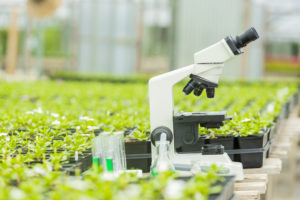Nuclear Waste Bioremediation

“Nuclear Waste Bioremediation”
Stanford student paper written by Evelyn Chang. March 2016.
Important Points:
- In the last decade it was observed that pools of radioactive waste were a hotbed for several unique strains of radioactive resistant bacteria capable of performing remarkable metal chemistry on the radionuclides. This included the oxidation or reduction of metallic ions analogous to current waste clean-up strategies.
- The harnessing and development of the chemical capabilities of these low-maintenance organisms may present a feasible, cost-effective waste bioremediation process.
- Pollmann et al. described the capability of Bacillus sphaericus to bind to and accumulate high amounts of radioactive metals. In one study it was observed that B. sphaericus thrived in uranium mining waste piles. It was reported to possess a paracrystalline proteinaceous surface, defined as the S-layer, to which these toxic metals were found to localize. Pollmann et al. disclose a filter design utilizing this bacterial S-layer to trap uranium ions as waste water or sediments are passed through the filter. In immobilizing the radioactive uranium species on the S-layer, it becomes much easier to remove large amounts of the radionuclide.
- In another study on uranium bioremediation, Kazy et al. describes the study of a Pseudomonas strain capable of intracellularly sequestering uranium and thorium ions.
- Scientists are also looking to engineer strains of bacteria capable of accumulating even higher doses of radioactive species.
- In a process dubbed phytoremediation, scientists harness the capabilities of plants to accumulate radioactive species.
- Singh et al. describes the use of fast-growing Vetiver grass(Vetiver zizanoides) to absorb Sr-90 and Cs-137 fro its environment. In vivo studies indicate that V. zizanoides shoots were capable of removing up to 91% of Sr-90 and 59% of Cs-137,from its hydroponic medium, after 168 hours.
- Radionuclide accumulation studies have also been done on water hyacinth, giant milky weed, and even Chinese cabbage.
http://large.stanford.edu/courses/2016/ph241/chang2/
